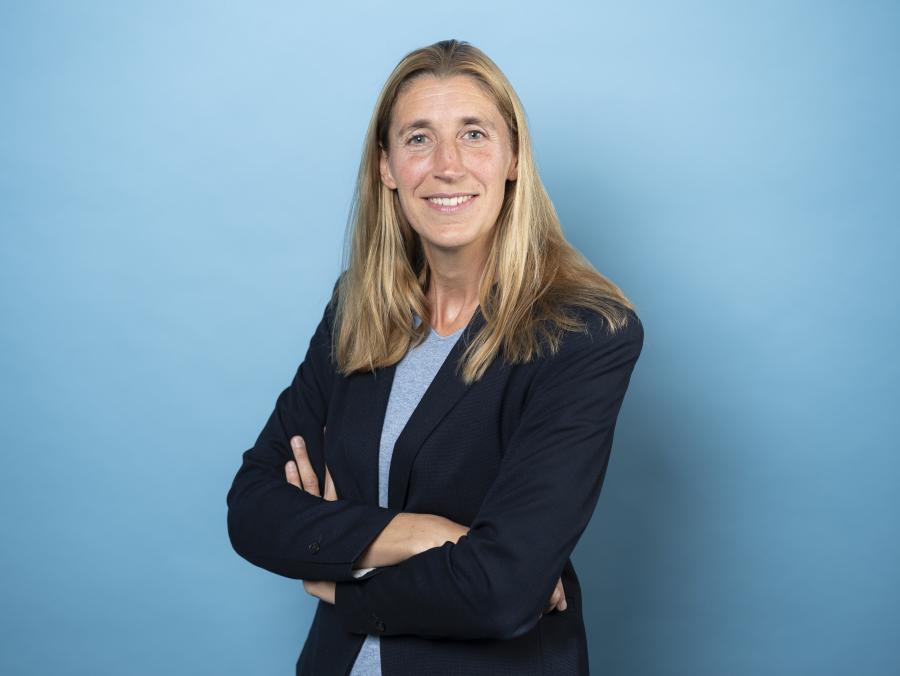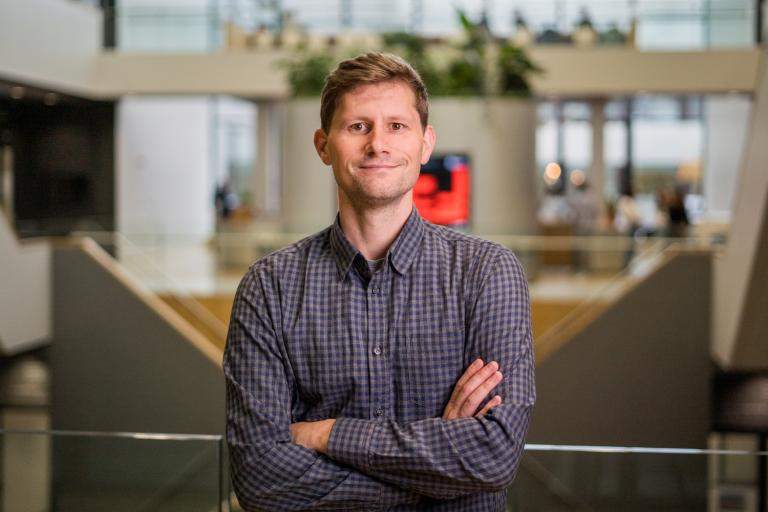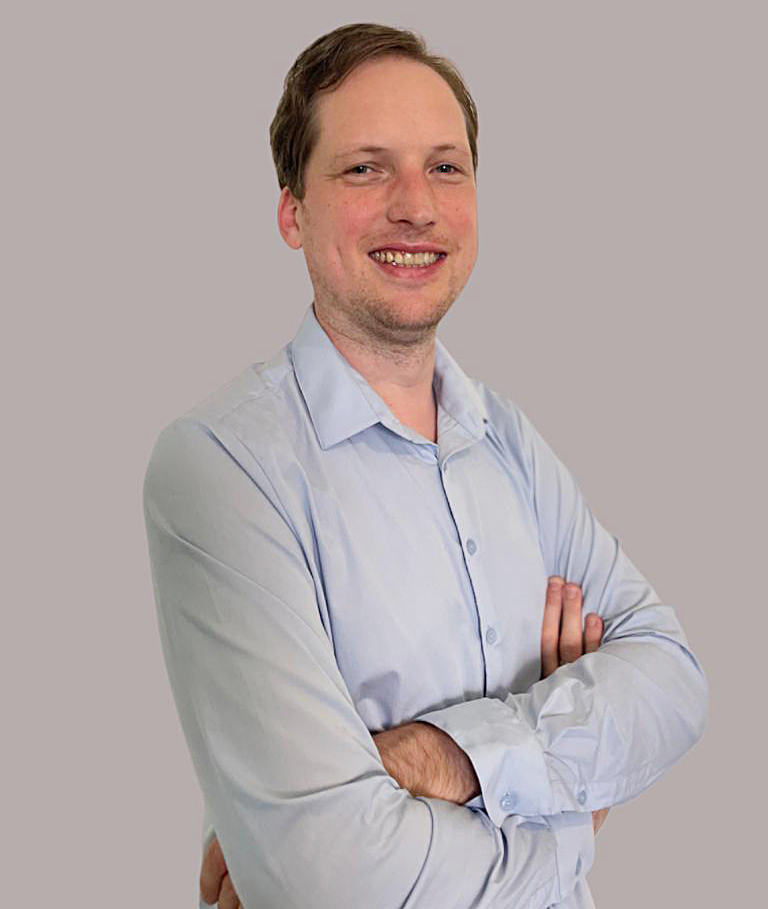Five young TU Delft researchers receive ERC Starting Grant
The European Research Council (ERC) has announced the ERC Starting Grants for young researchers. Five of them are scientists from TU Delft. This European grant of €1.5 million for a five-year research programme is intended to enable individual scientists to build their own teams and conduct groundbreaking research.
The ERC Starting Grant winners from TU Delft are:
Nerve-Repair2.0 - Biodegradable MEMS implants for nerve repair
Clementine Boutry – Electrical Engineering, Mathematics and Computer Science (EEMCS)
Biodegradable technologies offer many advantages for the development of future medical implants, particularly in applications where they are only needed temporarily. Fabricating such devices from biodegradable materials avoids the need for a second surgery to remove the implants after their period of use.
Clementine Boutry has received an ERC Starting Grant for her project Nerve-Repair2.0, in which her team will develop biodegradable MEMS (Micro-Electro-Mechanical Systems) implants for nerve repair, a new class of microsystems made entirely of biodegradable materials, including sensors, actuators (mechanisms that cause movement), and electrical circuits.
Each year, an estimated 300,000 cases of trauma-related peripheral nerve lesions occur in Europe. These injuries result in partial or total loss of motor, sensory and autonomic functions. For large injuries, less than 25% of patients recover proper motor function and less than 3% regain sensation. Accelerating nerve regrowth is a key factor, as the disconnected part of the nerve dies quickly after the injury. Therefore, it is truly a race against time. Dr. Boutry’s research will focus on a new therapeutic approach based on her previous Marie Curie research and on recent clinical findings: the mechanical stimulation of peripheral nerves to accelerate their regrowth. The Nerve-Repair2.0 project will focus on two different medical implants: 1) a first implant providing wireless cyclic mechanical stimulation to the severed nerve, 2) a second implant with an implantable biodegradable MEMS micropump applying constant traction, with the corresponding biodegradable sensors.
There are high expectations of clinical therapies for damaged nerves. The development of new functional biodegradable materials (with tailored magnetic, electrical, mechanical, and chemical properties), and customized fabrication processes in clean rooms will enable the realization of fully biodegradable microsystems, while retaining the established advantages of MEMS (small size, high precision, fast response time, low energy consumption, reliable large-scale production). Beyond neurosciences, Nerve-Repair2.0 will pave the way for other medical applications including cardiac diseases, with the objective to address crucial societal challenges that could not be solved otherwise.
RECALLCO2 – Selective CO₂ Reduction to CO and Alcohols without Platinum or Noble Group Electrodes
Tom Burdyny – Applied Sciences (AS)
The electrochemical conversion of CO2 to carbon-based feedstocks represents one of few technological routes capable of replacing fossil fuel derivatives. Despite substantial advancements, however, major challenges impair CO2 electrolysis from matching its promise. Critically, steady acidification of CO2 electrolyzers during operation currently necessitates the use of iridium-based anodes. This is unacceptable from a cost and resource availability perspective. More fundamentally, while CO2 reduction to CO, formate and ethylene has become highly selective, the production of high-energy density alcohols with high selectivity has been elusive. To overcome these barriers, new scientific approaches are needed.
RECALLCO2 will resolve iridium dependencies and non-selective alcohol production in CO2 electrolysis through a combination of novel electrochemical cell design and the development of molecular catalytic architectures which break existing fundamental limitations. On the system design front, I will micro manipulate reagent, ionic and water fluxes to inhibit nickel corrosion pathways which presently necessitate iridium anodes. This will be the first-ever intrinsically stable CO2 electrolyzer capable of using nickel anodes.
A second pillar is the conceptualization that strong electronic-coupling of metal complexes to metal electrodes can eliminate redox-controlled reaction pathways on molecular catalysts. This counters decades of work using carbon electrodes as supports. Coupling with a metal electrode will delink electron transfers from a molecular catalyst’s oxidation states, and fundamentally change catalytic behaviour that currently restricts reactions to 2 electrons. Thus, CO2 reduction products such as methanol (6 electrons) and ethanol (12 electrons) will become viable. Utilizing this counterintuitive approach, I will push alcohol synthesis well beyond state-of-the-art selectivity and reaction rates, giving renewed promise for producing these compounds.
ADAPT-OR – ADAPtive Transportation systems with holistic Representation of supply and demand
Bilge Atasoy – Mechanical, Maritime and Materials Engineering (3mE)
Transport systems are complex with various entities across different decision-making levels. There is currently no comprehensive way to model these entities and their interactions, which prevents utilizing the full potential of the system. For efficient and sustainable transportation, we need to model the perspective of both the supply (e.g., services, infrastructure) and the demand side (e.g., preferences of users). Only then a holistic modelling framework can be developed where the decisions at different levels learn from one another and are adapted continuously in a robust way while accommodating the different preferences.
I propose a holistic adaptive modelling framework that considers the interaction between different levels, both on the supply and demand sides, in order to adapt the decisions towards increased efficiency and sustainability. This necessitates a paradigm change in modelling as it is challenging to maintain robustness across different time-scales at the network level. Even though integrated models for multiple decision-making levels (strategic, tactical, operational) are a trend, they only allow a reactive ex-post assessment but are not dynamically coupled (not self-learning). I plan to achieve this by developing model-based adaptive optimization and learning methods with my expertise on optimization and behavioural modelling. For example, based on the performance of the routing decisions at the operational level in terms of delays, the decisions on fleet sizing and/or capacity of facilities will be adapted. Similarly, based on a continuous learning of the preferences of users, transport decisions will be adapted.
ADAPT-OR will lead to new models and algorithms for transportation researchers (and beyond) with self-learning capabilities. This capability will enable service providers to adapt and maintain their business, users to receive better services and society to reach sustainable transport solutions addressing one of EU’s grand challenges.
VenusVolAtmos - Volatile Element Cycles on Venus: Implications for the Evolution of Venus´ Greenhouse-Dominated Atmosphere
Edgar Steenstra – Aerospace Engineering (AE)
Venus is similar to Earth in terms of density, size and composition. Yet both bodies evolved so dramatically different that Venus now has an uninhabitable, run-away greenhouse atmosphere in contrast to Earth´s favourable habitable conditions. Despite alarming parallels with CO2-driven global warming on Earth, the origin and evolution of Venus´ run-away greenhouse atmosphere remains poorly understood. Problematically, current models fail to incorporate the important effects of volcanic degassing and atmosphere-surface interaction throughout Venus´ history.
Due to Venus’ CO2-rich atmosphere, surface pressures are 90 times greater than on Earth. Volcanoes on Venus will degas under very different conditions, yielding different volcanic gas compositions and gas fluxes to the atmosphere. Constraints on volatility and the contribution of magmatic volatiles to the composition of Venus´ atmosphere are pivotal for understanding the extent and timing of volcanic activity on Venus, especially in light of upcoming Venus exploration missions. Interaction between Venus’ atmosphere, volcanic gasses and surface likely plays a key role in determining volatile fluxes but is poorly understood at conditions relevant for Venus’ surface. The critical lack of such challenging experiments precludes a detailed assessment of the Venusian volatile cycle and atmospheric evolution.
I will quantify the past and current interior-to-atmosphere volatile element flux on Venus. In a highly multi-disciplinary approach, I will perform 1) pioneering, high P-T experiments mimicking magma degassing on Venus and atmosphere-gas-rock interactions, 2) using state-of-the-art (in situ) analyses of gas speciation and reaction rates and 3) integrate these results in numerical models to obtain quantitative volatile fluxes for Venus. This work allows for rigorous re-assessment of Venus’ interior and atmospheric evolution and will provide a solid framework for future exploration of Venus.
MesoClou – Unlocking the mesoscale frontier of cloud-climate uncertainty
Franziska Glassmeier – Civil Engineering and Geosciences (CEG)
Climate projections are essential for society. They are important for making climate policies as a result of climate change. However, projections are also accompanied by large uncertainties. According to the latest assessment of the Intergovernmental Panel on Climate Change (IPCC), clouds remain the largest source of this uncertainty. The main culprit are mesoscale cloud fields, which organise into striking patterns, and cover hundreds of kilometers over the subtropical and tropical oceans. While conspicuous in satellite imagery, we lack the concepts and tools to adequately model their evolution.
To overcome this mesoscale cloud-climate uncertainty, the project will develop a framework to conceptually understand and quantitatively predict mesoscale cloudiness from time series of satellite imagery. This requires a fundamental change of perspective: Instead of investigating cloud processes from the bottom up, the new approach will directly focus on the emergent behaviour at the mesoscale. The new framework will capture mesoscale cloudiness as a data-driven complex system. This characterisation will enable an assessment of the role of clouds in climate projections that is novel in two aspects: First, it will include observational information that has not been used before to reduce cloud-climate uncertainty. Second, the reliability of state-of-the-art lines of evidence will be objectively judged based on how well they capture different scales of cloud processes. The new methodology will be equipped to tap into the next generation of data and unlock additional lines of evidence.
As a comprehensive tool for mastering mesoscale cloudiness, the new framework will have broad and lasting impact: It will steer future cloud research, it will notably reduce uncertainty in the next IPCC assessment, and it will be an essential guide for the upcoming data-driven revolution of atmospheric and climate modeling.
About the ERC
The ERC, set up by the European Union in 2007, is the premier European funding organisation for excellent frontier research. It funds creative researchers of any nationality and age, to run projects based across Europe. The ERC offers four core grant schemes: Starting Grants, Consolidator Grants, Advanced Grants and Synergy Grants. With its additional Proof of Concept Grant scheme, the ERC helps grantees to bridge the gap between their pioneering research and early phases of its commercialisation.
ERC press release and complete list Starting Grants.




